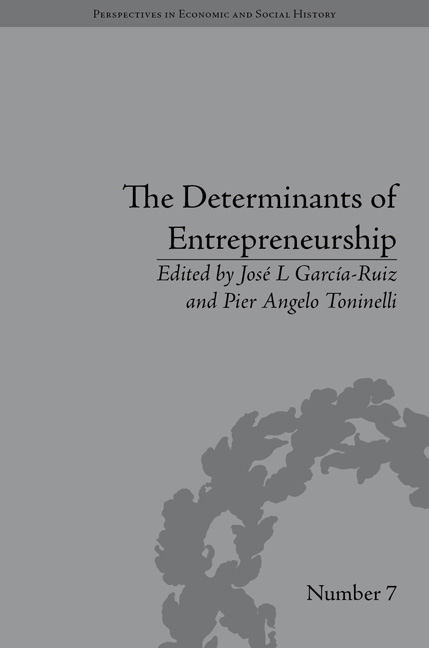Book contents
- Frontmatter
- CONTENTS
- List of Figures and Tables
- List of Contributors
- Introduction
- Part I Entrepreneurial Typologies
- Part II The Business Leaders
- 3 Italian Entrepreneurship: Conjectures and Evidence from a Historical Perspective
- 4 Entrepreneurship: A Comparative Approach
- 5 Dynasties and Associations in Entrepreneurship: An Approach through the Catalan Case
- Part III Culture or Institutions?
- Notes
- Works Cited
- Index
3 - Italian Entrepreneurship: Conjectures and Evidence from a Historical Perspective
from Part II - The Business Leaders
- Frontmatter
- CONTENTS
- List of Figures and Tables
- List of Contributors
- Introduction
- Part I Entrepreneurial Typologies
- Part II The Business Leaders
- 3 Italian Entrepreneurship: Conjectures and Evidence from a Historical Perspective
- 4 Entrepreneurship: A Comparative Approach
- 5 Dynasties and Associations in Entrepreneurship: An Approach through the Catalan Case
- Part III Culture or Institutions?
- Notes
- Works Cited
- Index
Summary
Introduction
The last two decades have seen a renewed interest towards entrepreneurship and/or the individual entrepreneur, which in turn has stimulated research both in the theory and the history of entrepreneurship. This chapter fits this new climate: it is part of an ongoing research project on the determinants and the role of entrepreneurship in Italian economic development. Its primary aims are the creation and a preliminary evaluation of a data set of Italian entrepreneurs for the period encompassed between the Unification of the Kingdom (1861) and the end of the twentieth century.
Several fresh suggestions coming from both economics and history prove useful in our survey. First we would like to mention the broad partition in two main categories – innovative versus replicative entrepreneurs – proposed by William Baumoletal. A further interesting suggestion comes from the taxonomy of capitalism they propose (on the basis of their different rate of innovation and entrepreneurship). They hypothesize in fact the existence of four different categories of capitalism: 1. state guided capitalism; 2. oligarchic capitalism; 3. big firm capitalism; and 4. entrepreneurial capitalism. While each of these shows virtues and pitfalls, according to them, ‘the best form of “good capitalism” is a blend of “entrepreneurial” and “big-firm” capitalism, although the precise mix will vary from country to country'. Further insights come from the four models of entrepreneurship development, oft en overlapping, most recently advanced by the Monitor Group.
- Type
- Chapter
- Information
- The Determinants of EntrepreneurshipLeadership, Culture, Institutions, pp. 49 - 80Publisher: Pickering & ChattoFirst published in: 2014



